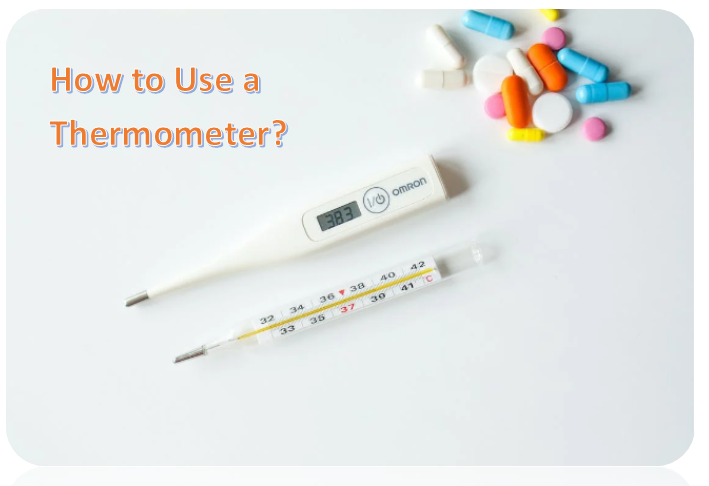Do you know what’s the perfect way to use a thermometer? Having a thermometer around the house will help you identify probable illnesses like the flu or cold on your own.
However, you can only capitalize on it effectively if you know how.
Depending on one’s age, there are different ways to use a thermometer. An instrument used in medicine to gauge body temperature is the thermometer. It is a tool that helps to monitor changes in body temperature and is a crucial part of any medical kit.
Thermometers come in different types, including digital thermometers, mercury thermometers, and infrared thermometers.
What are some different types of Thermometers?
Digital thermometers are the most commonly used and are battery-powered. They provide quick and accurate temperature readings, and some models have features like fever alarms and memory storage for previous readings.
Mercury thermometers have a glass tube filled with mercury and provide accurate temperature readings. However, they have been phased out due to the potential health risks associated with the accidental breakage of the glass tube and the release of mercury.
Infrared thermometers use infrared technology to measure temperature and are often used in non-contact temperature measurements. They can measure body temperature from a distance and are useful for taking the temperature of young children or people who are sensitive to physical contact.
Uses of Thermometer & How to Use?
Thermometers can be used to measure body temperature, the temperature of liquids like milk or water, or the temperature of the environment like a room or an outside area. Using a thermometer is a simple process that can be done in a few steps.

Here is a general guide on how to use a thermometer:
Clean the thermometer:
Before using the thermometer, ensure it is clean. If you are using a digital thermometer, use a clean cloth or cotton swab dipped in alcohol to wipe the tip of the thermometer. If you are using a glass thermometer, wash it with soap and water and rinse it with cool water.
Turn on the thermometer:
For digital thermometers, turn on the device by pressing the power button. For glass thermometers, shake the thermometer down to below the lowest temperature reading.
Place the thermometer:
Place the thermometer in the correct position. For oral temperature readings, place the thermometer under the tongue and ask the person to close their mouth. For rectal temperature readings, lubricate the tip of the thermometer with petroleum jelly, insert the thermometer into the rectum, and hold it in place until the device beeps or the temperature reading is complete.
Wait for the thermometer to read the temperature:
Wait until the thermometer beeps or the reading is complete (usually a few seconds). Do not move or talk while waiting for the temperature reading.
Read the thermometer:
Read the temperature reading on the digital display or the line on the glass thermometer. Record the temperature and follow the necessary actions based on the results.
Clean the thermometer:
After using the thermometer, clean it with soap and water or an alcohol swab, depending on the type of thermometer used.
Different ways to use Thermometers –
Oral –
If you’re looking for a sore throat, there could be many reasons why, and one way to help choose if it’s allergies or a cold is to look for a fever. The oral approach combined with a digital thermometer is the first way to check a person’s body temperature. To do it correctly, insert the thermometer beneath your tongue and briefly close your mouth. After that, check the temperature after the thermometer sounds.
Rectal –
For babies and children who are 3 years or younger, the ideal way to use the thermometer is to check the body’s temperature with the rectal method is common. This method can be difficult because you must keep the kids still to record the accurate temperature of the body. Place the lubricant on the tip, put your baby on their belly, keep a diaper underneath to catch any feces, only stick the tip of the thermometer, and hold it for 30 seconds.
Axillary –
Another way to use to check one’s temperature with a digital thermometer is to use the armpit which is also known as axillary. It is an excellent substitute for taking your body temperature orally. It’s also important to note that the axillary method isn’t as accurate as the previous ones, but you can use it to check someone’s temperature quickly.
Ear –
It can be advantageous to be able to use any type of thermometer at home. There are additional thermometers than thermometers that you can use, like tympanic devices. It is yet another fantastic alternative if you need to quickly and accurately take your baby’s or small child’s temperature.
Forehead –
A forehead thermometer, also known as an artery thermometer, can be used to attempt to take someone’s temperature. The right way to use it is to put the protective cap on, place the thermometer carefully on the forehead, and remove the protective cover after you get the body temperature readings. These aren’t as common because they are reliable and can be expensive to some extent.
A thermometer is a medical device used to measure body temperature and monitor temperature changes. They come in different types and are essential tools for any medical kit or home first aid kit. Regular monitoring of body temperature can help identify changes in health and indicate the need for medical attention.
In conclusion, using a thermometer is a simple process that requires a clean thermometer, proper positioning, waiting for the reading, and recording the temperature. It is crucial to adhere to the manufacturer’s recommendations for particular thermometers, and if in doubt, seek medical guidance for health care products.

